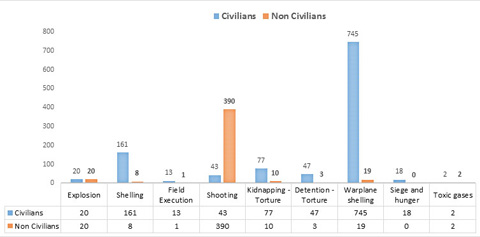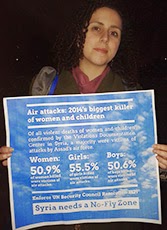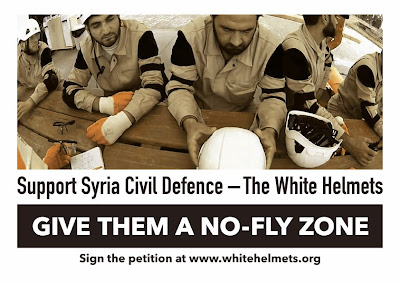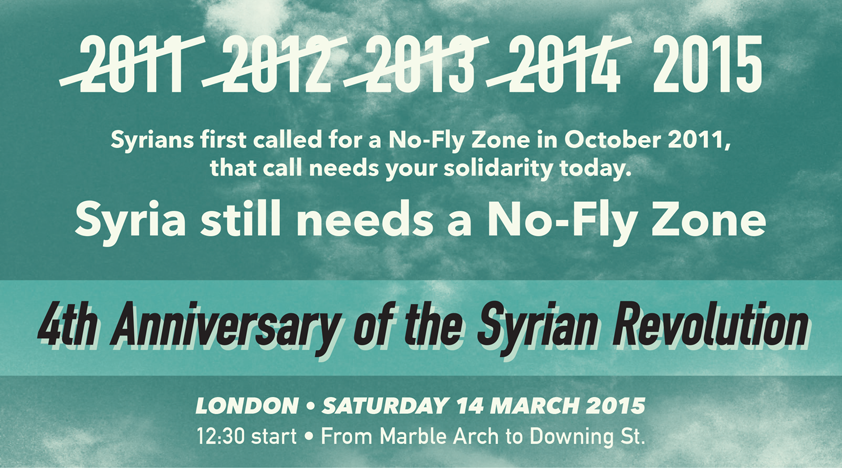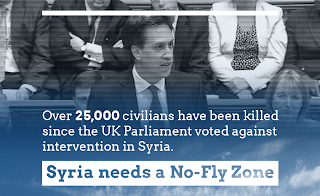Anyone who has followed the Syria war in any detail, even from a secure distance in the UK, will have seen things they would rather not have seen. Photographs of tortured, starved, lacerated, or burned bodies; images of children with limbs gone, or jaws half blown off, or heads completely blown off. For me, the presence in memory of these indelible images made the thought of watching
Assad calmly answering questions on the BBC as unsettling a prospect as watching a YouTube clip of the aftermath of a marketplace bombing.
We know the routine by now: a book-lined office signalling a stable, secular, civilised, Western-friendly leader. A good suit signalling a man we can do business with. And then
deny everything.
Deny the Human Rights Watch reports, the UN reports on barrel bombs, on chemical weapons, on the blocking of food aid, on the blocking of medical aid. Deny every single thing.
Jeremy Bowen politely challenged Assad with a series of reports of regime crimes. He quoted from a
Human Rights Watch report of 30th January saying that Assad’s forces “deliberately and viciously attacked civilians in opposition-held areas” using indiscriminate weapons, most notoriously barrel bombs. Assad dismissed it as a “childish story” denying that the regime uses barrel bombs or any other indiscriminate weapons. (
7:25)
Jeremy Bowen persisted, citing
Staffan de Mistura, United Nations and Arab League Envoy to Syria, on the “constant fear of barrel bombs.” Assad continued to deny the regime targeted civilians saying “there is no logic in it.” (
8:51)
Jeremy Bowen refused to accept Assad’s denial of barrel bomb attacks, saying “it does happen,” and asked why he doesn’t stop such attacks to improve his international standing. Assad continued to deny even the existence of barrel bombs. (
10:35)
Jeremy Bowen asked him about the recent
OPCW report on chlorine attacks. Again Assad not only denied responsibility for the chlorine attacks, he seemed to even deny that there had ever been any chemical weapons attacks in Syria. (
11:36)
When Jeremy Bowen asked about civilian neighbourhoods under siege by the regime, Assad denied that any civilians are present in those neighbourhoods. (
19:28)
When Jeremy Bowen pointed to the regime restricting medical supplies to civilians in rebel-held areas, citing
Elizabeth Hoff of the World Health Organisation, Assad denied it, saying the regime supplies ISIS-held Raqqa with food and medical supplies, so why wouldn’t they supply other areas? (
20:38)
Jeremy Bowen quoted a
statement to the UN Security Council by Valerie Amos, head of UN OCHA, on the regime’s blocking of a majority of UN aid convoys to besieged areas. Assad called it an “unrealistic un-objective statement,’ saying “we cannot discuss it as fact, this is part of the propaganda against Syria for the past four years.” (
21:18)
Is there anything said by a Western leader that he agrees with? Is there any reporting on Syria that he agrees is true? Here are two things he clearly liked hearing from the West…
Assad: “Obama answered your question when he said few month ago that waiting for or depending on what they called the so-called moderate opposition was a ‘fantasy’.” (
5:10)
Assad: “Even in the Western media now they are talking about the ISIS and Al Nusra and Al Qaeda affiliates organisation and groups prevailing.” (
5:38)
Obama’s miserable
“fantasy” comment, made in contradiction to his own declared policy, should shame him as it is spewed back from Assad’s mouth. It should shame Obama just as should his narrow intervention against ISIS when Assad is the party that continues to be
by far the biggest killer of Syrian civilians.
In this interview Assad has once again shown himself to be incapable of any acknowledgement of responsibility, of any recognition of reality. He is not someone the West can do business with. The greatest fantasy on Syria has been the hope that diplomacy could trump force. This war can’t end as long as Assad is allowed the means to slaughter at will.
On the 22nd of this month it will be three years since journalists Marie Colvin and Rémi Ochlik were killed by Syrian regime shelling in the siege of Baba Amr, Homs. According to fellow journalist
Paul Conroy, severely injured in the same attack, the media centre they were staying in was deliberately targeted by Assad’s forces bracketing their shellfire in order to achieve a direct hit.
And on the 22nd it will also be one year since the UN Security Council passed
Resolution 2139, which demanded amongst other things an end to sieges of civilian areas, an end to shelling of civilian areas, and an end to air attacks on civilian areas, including an end to barrel bombing.
Every 30 days since the passing of UNSCR 2139, the Secretary General has been required to report to the Security Council on compliance.
Every report has listed ongoing sieges, ongoing shelling of civilians, ongoing air attacks on civilians.
UNSCR 2139 ended with the Security Council expressing “its intent to take further steps in the case of non-compliance with this resolution.” Since then Russia has made clear it will block any substantial measures to enforce compliance. The Security Council is in a similar position as it was over
Kosovo in 1999, having made demands but being unable to pass a vote for enforcement of those demands.
One year on from the passing of that resolution, individual permanent members of the Security Council now need to recognise that there is no prospect of a diplomatic solution with Assad. Consequently there is no prospect of relief for civilians unless they follow the Kosovo precedent and take responsibility to
enforce Resolution 2139.




